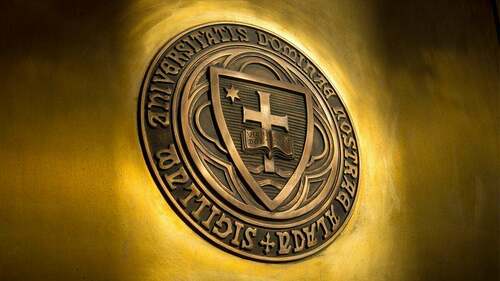
The University of Notre Dame, in concert with LabCorp, conducted nearly 12,000 pre-matriculation COVID-19 tests of students before the start of classes on campus today, with less than one-third of 1 percent testing positive.
The 11,836 included some 8,600 undergraduates, and other graduate and professional school students. Of the total, 33 students, or 0.28%, tested positive and cannot arrive on campus until they are cleared by medical professionals.
“I commend our students, their families, the University’s COVID Response Unit, University Health Services and our partner LabCorp in completing this formidable undertaking in a timely manner,” University President Rev. John I. Jenkins, C.S.C., said. “We wanted to make certain our students’ return did not represent a health threat to the South Bend community.”
In addition to the pre-matriculation screening, Notre Dame conducted a detailed analysis of counties across the nation from which students would be arriving to identify students coming from so-called hot spots who may warrant additional screening after they arrive on campus.
“As we begin the academic year, we will continue to make data-based decisions using the latest information in partnership with our local public health officials and in consultation with outside medical experts,” Marie Lynn Miranda, the Charles and Jill Fischer Provost of the University, said. “We will remain vigilant in our ongoing work to provide a healthy and safe environment for our students, faculty and staff members.”
The campus reopened after months of preparation that included the following:
- Father Jenkins announced reopening plans on May 18, to give him and his team time to put together a robust plan.
- Eliminated fall break and post-Thanksgiving return to campus in order to limit opportunities for re-infection.
- Canceled study abroad programs.
- While planning for in-person instruction, simultaneously created the capacity to provide remote learning should circumstances dictate.
- Established a close working relationship with an interdisciplinary team at the Cleveland Clinic, as well as with county health officials and local hospitals.
- Established protocols for testing, tracking, quarantining and isolation.
- Tested all students before their arrival on campus (less than 0.28% were positive).
- Established a high-capacity testing center on campus, accessible by car or on foot.
- Encouraged remote work for employees who are not required on campus to do their jobs.
- Encouraged managers to permit flexible work schedules where possible.
- Added 10 days of paid time off to existing benefits for employees who contract COVID-19, or whose family members do.
- Expanded to 30 days, from 15, emergency child and elder backup care for all faculty and staff, adding graduate students to this benefit.
- Optimized HVAC systems for prevention of COVID-19 transmission.
- Acquired separate housing and online instruction for students who may have to be quarantined or isolated.
- Established a customized computer application for all students, faculty and staff to report on their health daily.
Reopening by the numbers
The following are among the measures taken to make the campus as safe as possible:
- 100,000 cloth masks were distributed to students, staff and faculty; three to each individual with a reserve supply.
- 50,000+ health and safety signs and decals saturate campus, reminding all to wear masks, keep safely distanced from each other, frequently wash hands, and engage in other health and safety practices.
- 14,000 surface-cleaner bottles were deployed on campus.
- 12,000 pre-matriculation tests were conducted.
- 12,000 “Welcome Back” kits for all students include masks, hand sanitizers and thermometers.
- 10,000 gallons of hand sanitizer are in stock.
- 3,000 hand sanitizer stations have been installed on campus.
- 958 electric hand dryers were disabled and replaced with paper towel dispensers.
- 370 light pole banners were hung with health/safety messages.
- 207 paper towel dispensers were added.
- 50 “ambassadors” are on duty to remind people to wear masks and maintain safe distancing.
- 27 campus ballrooms, auditoriums and other large event spaces were repurposed to accommodate physical distancing for high-enrollment classes.